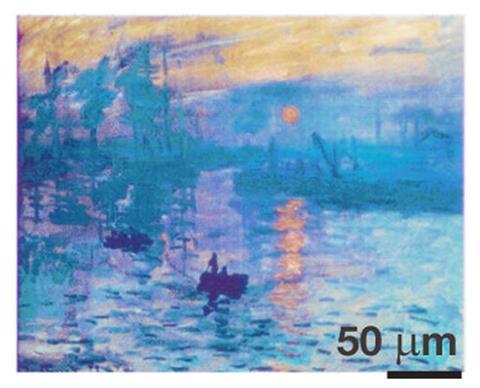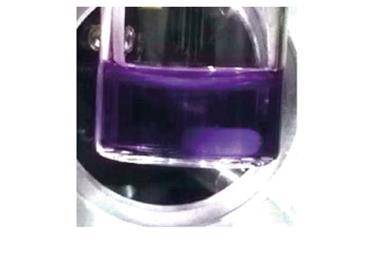Aluminium nanoparticles used to reproduce iconic Impression, sunrise painting

There is no paint or ink in this miniature reproduction of Claude Monet’s Impression, sunrise. Instead, the colours come from nano-sized discs of aluminium printed onto a sheet of silicon. The discs produce colour from plasmonic effects – the oscillation of electrons at the metal’s surface that changes the way it interacts with light.
Until now, the range of colours that could be produced in this way was very limited, but Joel Yang and colleagues at the Agency for Science, Technology and Research in Singapore have created a much wider palette by varying the size and arrangement of the aluminium nanodiscs. Each ‘plasmonic pixel’ in the picture contains four nanodiscs. The team found that by changing the diameter of the discs, the distance between them and their position within the pixel affected the colours they produced. They used different combinations to make a palette of over 300 colours – enough to make an easily recognisable reproduction of a real painting. The group suggest that as well as digital printing, their work could be useful for other applications making use of plasmonics, including security tags and sensors.
References
S J Tan et al, Nano Lett., 2014, DOI: 10.1021/nl501460x












No comments yet